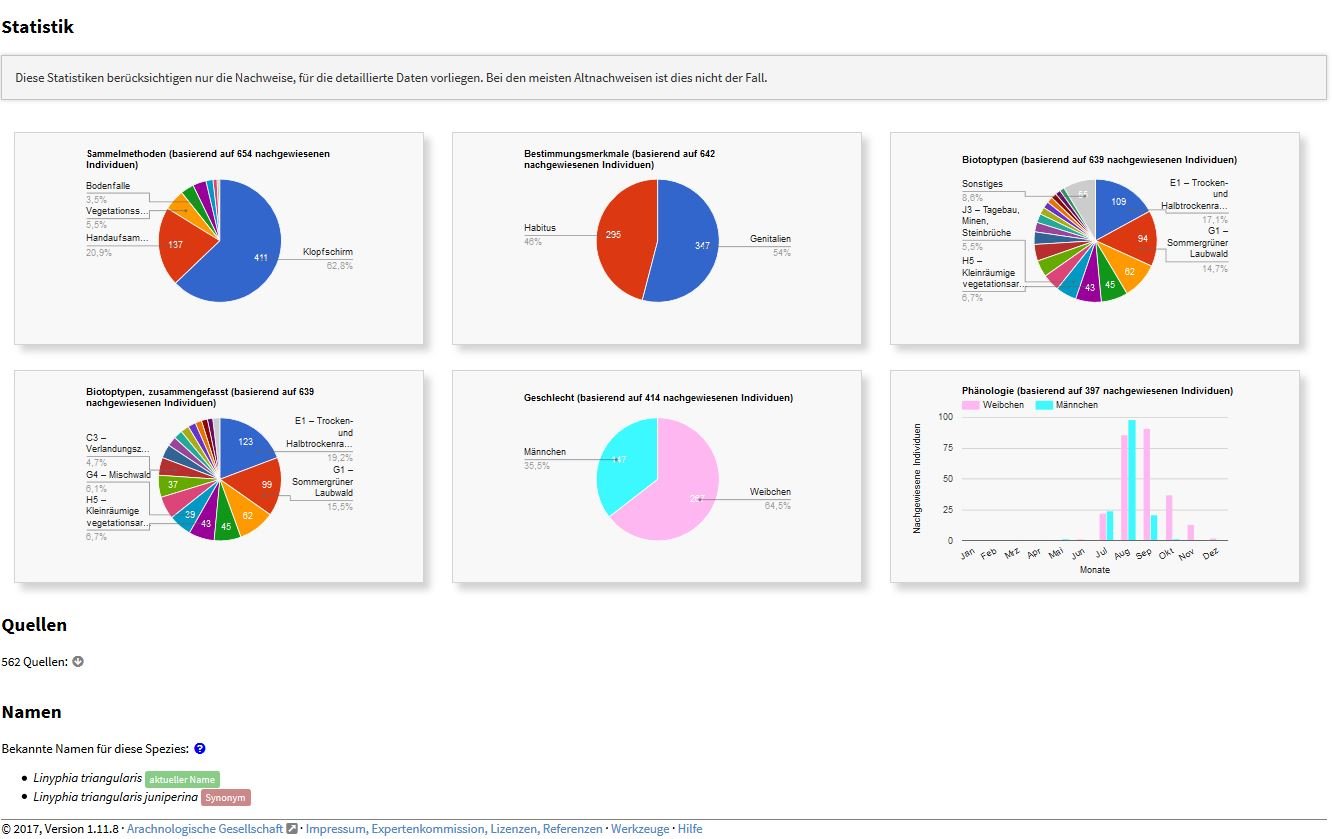Atlas of the European Arachnids
The Atlas of the European Arachnids is an unsystematic but continuously updated collection of records (occurrences) of arachnid species (excluding mites) in central Europe (while not excluding surrounding regions). This site continues the recording scheme of the Arachnologische Gesellschaft, formerly maintained by Aloysius Staudt.
Citation
: Arachnologische Gesellschaft (2017): Atlas of the European Arachnids, accessed at atlas.arages.de on {date of access}
- As an unregistered user you can use the system for information purposes and for research. Most functions are accessible via the menu.
- Species records can be found by selecting a species from the start page or by searching for its (binomial) name. The species pages also link the other species of the same genus.
- You can report new sightings, comment on records or send a message to the editors or administrators directly by https://atlas.arages.de/writemessage or after registration and login in your own account https://atlas.arages.de/register.
- As a registered user you can use the system for information purposes and for research, and you can add new data yourself. Most functions are accessible via the menu.
- New records can be added on the record source page or on a location page. You have to select the corresponding other data item.
- You can add records to locations that already exist in the system and were added by other users. However, it is recommended to add your own locations.
- You can modify or (provisionally) delete your own records.
- To add a larger number of records or locations there are import functions available.
Tools and Highlights
- Different scalable maps (Google, OpenStreetmap a.o.) are available.
- The decades of the records are visible by different colours.
- Direct links to other websites are offered (e.g. WSC, araneae, AraGes Wiki, Record maps of other societies).
- A printing function is available on the species pages to create large bitmaps of species distribution maps that can be used in publications, on posters, etc.
- The families, record sources and locations known to this system can be listed via the menu.
- Species lists can be created using a number of selection criteria.
- A number of statistics (sex, maturity, sampling method, identification, habitat type, phenology) transcending a single species are available.




